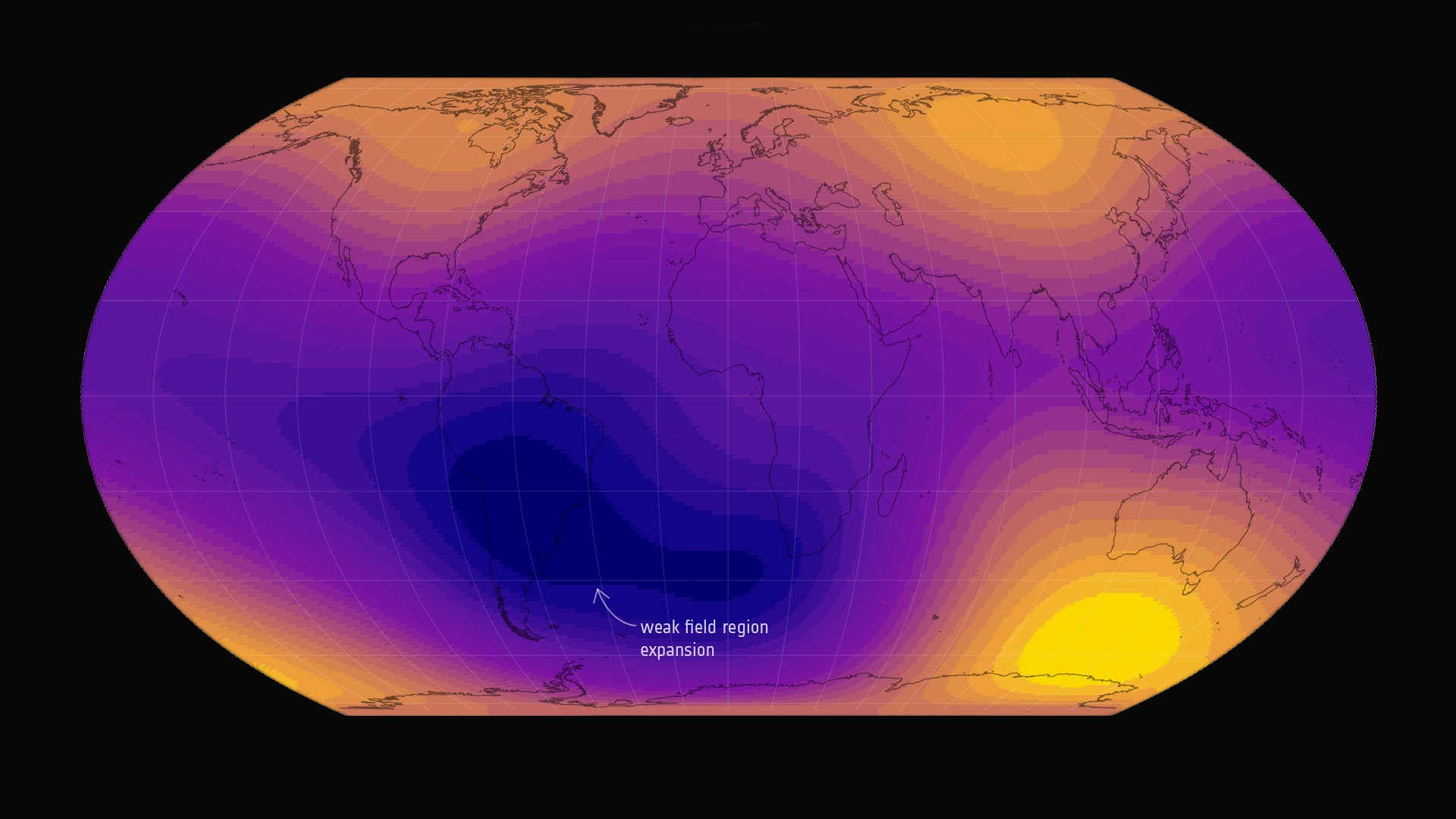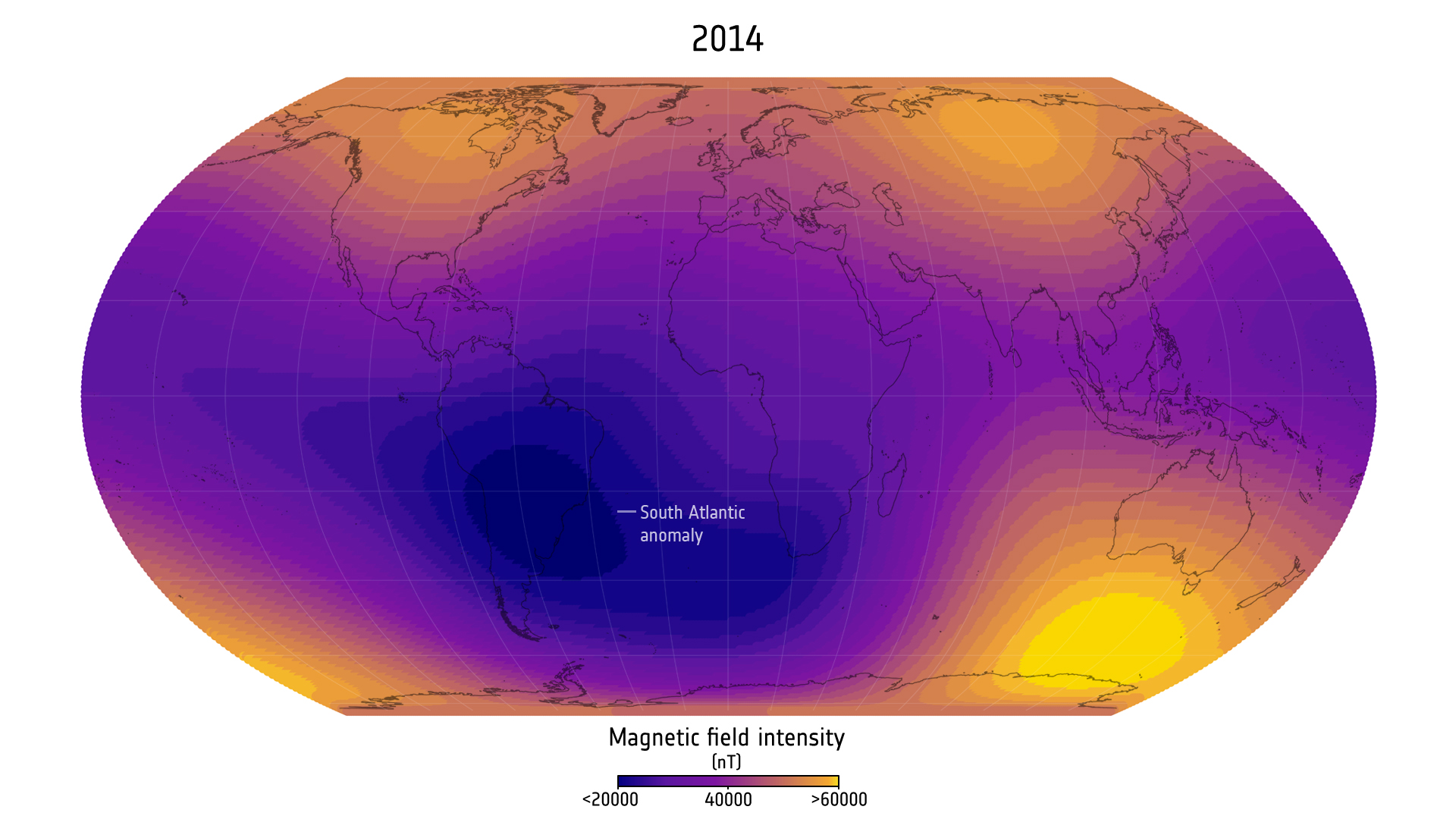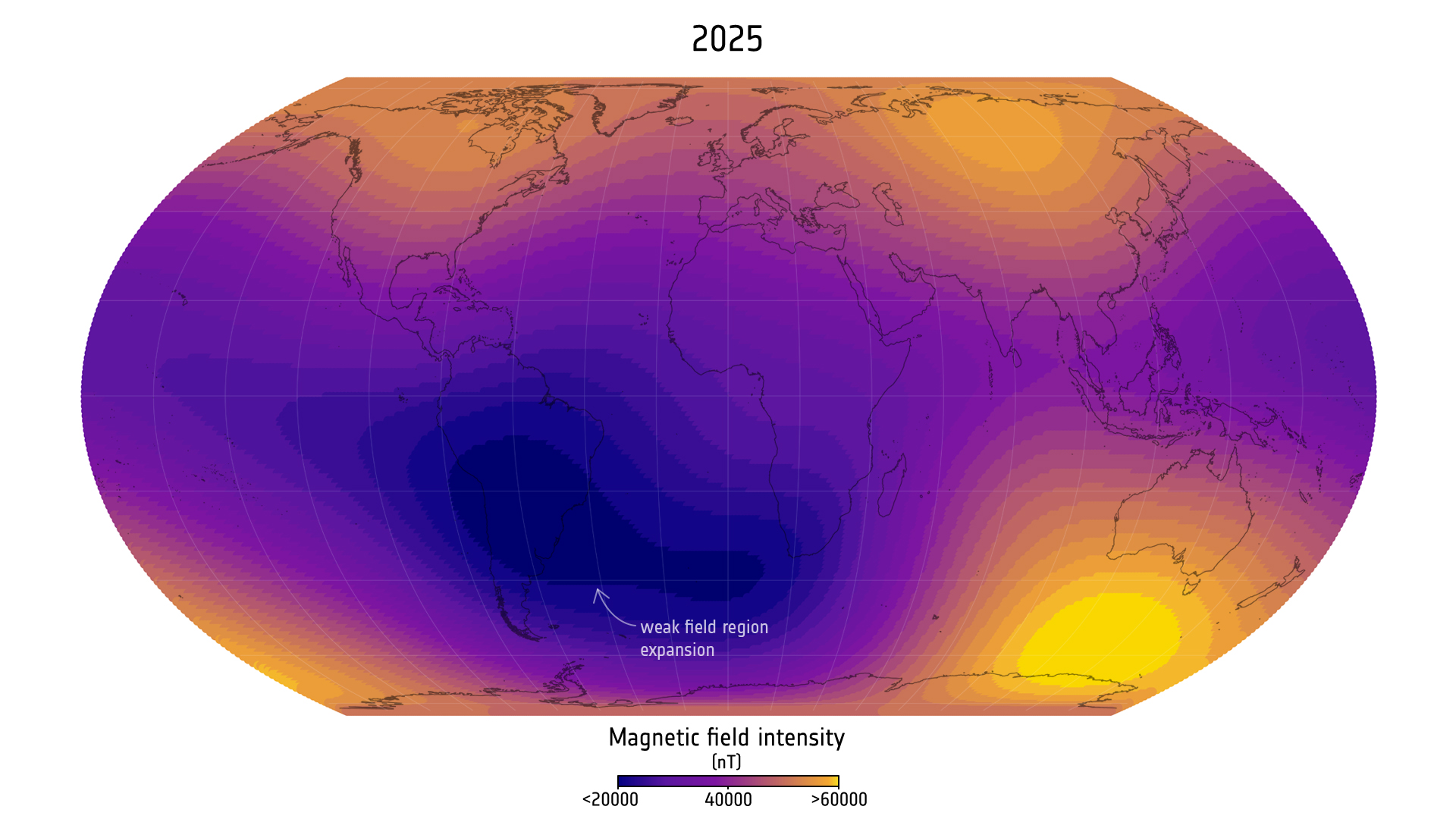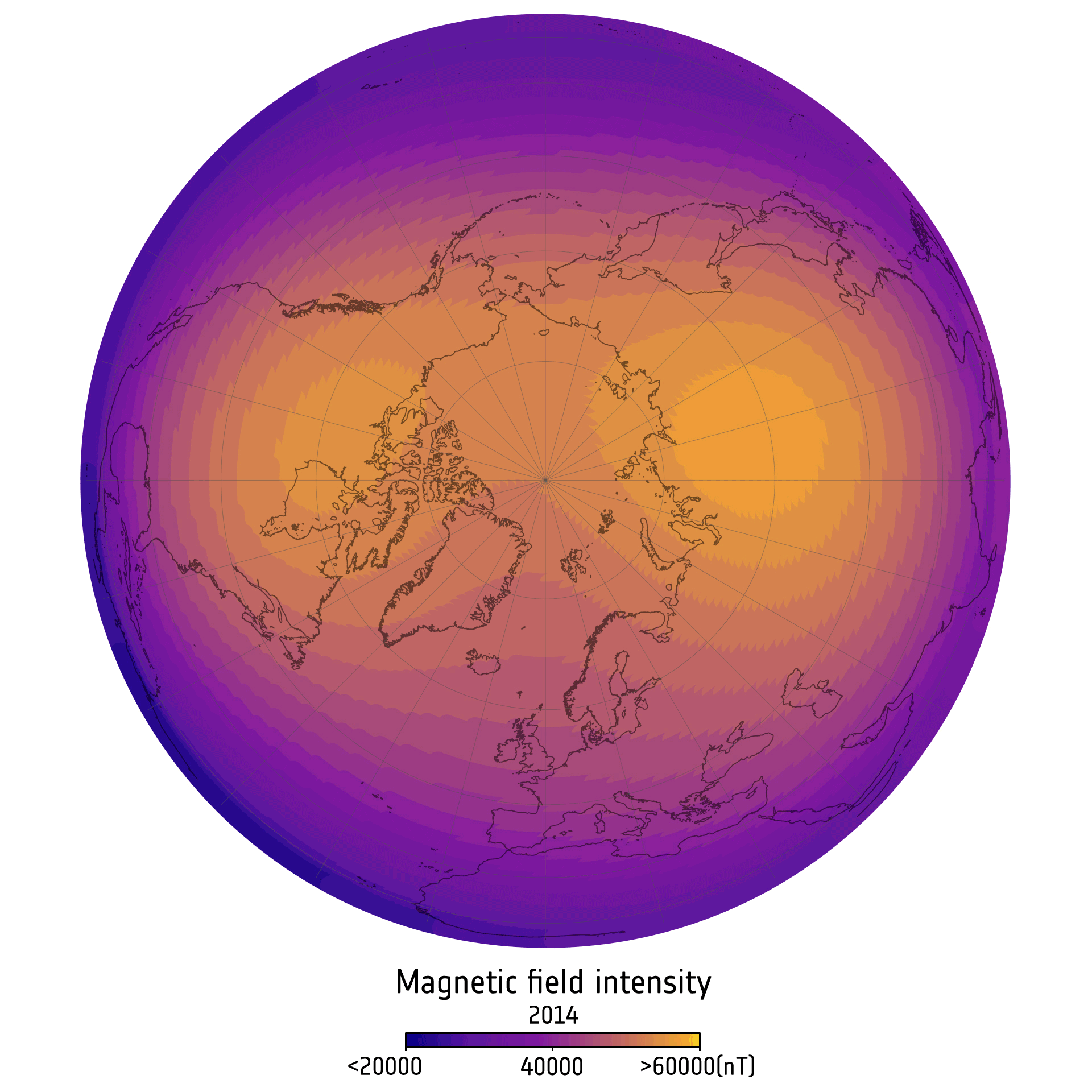A giant weak spot in Earth's magnetic field is getting bigger — and it could be bad news for satellites
Satellite data reveal that a weak region in Earth's magnetic field has grown by an area roughly half the size of continental Europe in the last 10 years.

A weak region in Earth's magnetic field has grown by an area roughly half the size of continental Europe in the last 10 years.
That's according to data collected by the European Space Agency's (ESA) Swarm satellite constellation over the last 11 years. Swarm has been monitoring a region known as the South Atlantic Anomaly since 2014, and scientists have just published a new study of the area that reveals that, not only has the anomaly expanded eastward, it has actually been weakening more quickly since 2020.
"It's changing differently towards Africa than it is near South America. There's something special happening in this region that is causing the field to weaken in a more intense way," study lead author Chris Finlay, professor of geomagnetism at the Technical University of Denmark, said in an ESA statement.
Geological samples reveal that the South Atlantic Anomaly has been occurring for around 11 million years, but only since the dawn of the space age has it really had the potential to cause damage.
That's because Earth's magnetic field helps block charged particles that flow from the sun, particles that can bombard satellites or even the International Space Station with damaging radiation. As these spacecraft fly over the South Atlantic Anomaly, Earth's protective barrier is weaker, meaning more of that radiation can reach and potentially damage them or cause blackouts in communication with mission controllers on the ground.
Earth's magnetic field is produced by the spinning molten iron at its core, which generates powerful electrical currents that extend into space. According to the scientists behind the new study, there are "strange patterns" in the region between Earth's molten outer core and its rocky mantle, where our planet's magnetic field is behaving strangely.
"Beneath the South Atlantic Anomaly, we see unexpected areas where the magnetic field, instead of coming out of the core, goes back into the core. Thanks to the Swarm data, we can see one of these areas moving westward over Africa, which contributes to the weakening of the South Atlantic Anomaly in this region," Finlay said in the ESA statement.
Breaking space news, the latest updates on rocket launches, skywatching events and more!


While Earth's magnetic field appears to be weakening and growing over the South Atlantic Anomaly, there are other areas where it appears to be strengthening, according to Swarm satellite data. It has strengthened in an area over Siberia, growing by a volume comparable to the size of Greenland, but a separate strong region over Canada has shrunk by an area nearly the size of India.
Swarm has also revealed that the magnetic north pole has been moving toward Siberia, away from Canada, since at least the mid-19th century. Since many navigation systems (like compasses) rely on the magnetic north pole for orientation, this shift could potentially have real-world impacts.

Ultimately, scientists say this new study reveals how complex our planet's magnetic field is and how important spacecraft like Swarm are in revealing its nature to us.
"When you're trying to understand Earth's magnetic field, it's important to remember that it's not just a simple dipole, like a bar magnet. It's only by having satellites like Swarm that we can fully map this structure and see it changing," Finlay said.
The three Swarm satellites launched in November 2013 atop a Russian rocket from the Plesetsk Cosmodrome. Since then, they have provided "the longest continuous record of magnetic field measurements from space," according to ESA.

Brett is curious about emerging aerospace technologies, alternative launch concepts, military space developments and uncrewed aircraft systems. Brett's work has appeared on Scientific American, The War Zone, Popular Science, the History Channel, Science Discovery and more. Brett has English degrees from Clemson University and the University of North Carolina at Charlotte. In his free time, Brett enjoys skywatching throughout the dark skies of the Appalachian mountains.
You must confirm your public display name before commenting
Please logout and then login again, you will then be prompted to enter your display name.
